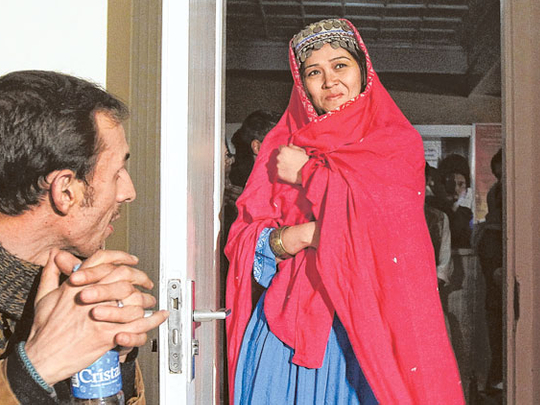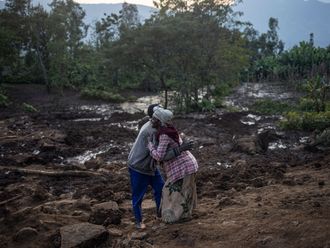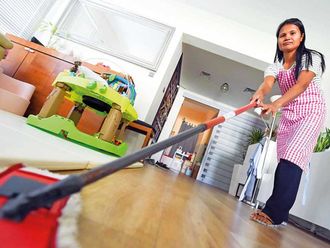
KABUL, Afghanistan: Afghan models paraded down a candle-lined catwalk on Friday as men and women watched from the audience in a restaurant off a muddy street in Kabul.
The rare fashion show in this war-weary capital was a small production but a big idea — part of an Afghan group’s efforts to empower women by breaking down barriers in this highly conservative Muslim society.
“The situation always gets tougher and tougher every day by day, but we should not back down. We are here to move on and move forward, so I think if women step up and they show up in this field, I think they will do a good job,” said Shahar Banoo Zeerak, the designer whose clothes were featured in the show.
The idea of women on display remains mostly taboo in Afghanistan more than a decade after the 2001 US assault that ousted the Taliban from power after a five-year reign of terror by the fundamentalist movement.
Some women still don’t go outside without wearing blue burqas that cover them from head to toe. Violence against women is still common in Afghanistan, and there are reports of women being stoned, executed in public or imprisoned for having affairs with men. Women have even set themselves on fire to escape domestic violence.
Friday’s fashion show was organised by Young Women for Change, an independent, non-profit Afghan organisation committed to empowering Afghan women and improving their lives.
Most of the 10 models, including three young men, who showed off 33 designs including colourful short-sleeved dresses, jeans, tunics and more traditional outfits — were Afghan women who volunteer for the group.
One of them, 17-year-old Farkhonda Taheri, had never even seen a fashion show before. She said her father and other family members were supportive of her decision to participate, but her grandmother was not happy.
“The biggest challenge for us is that we cannot do these things in Afghanistan because people do not like it,” she said afterward. “I was excited because I felt I am going to bring a change.”
She said it was important for Afghan youths to take risks to bring change as the country struggles to achieve a semblance of normalcy, with international combat forces preparing to withdraw by the end of 2014.
“Who will bring the peace? We are going to bring it. Afghans. The new generation,” Taheri said.
There have been a few other fashion shows in Afghanistan, but most were geared towards an international audience and seldom featured Afghan women or a mixed Afghan audience. Reflecting the obstacles, the organisers did not permit local Afghan media to film the event to protect the women, who on occasion appeared without headscarves and in short skirts.
“It may not be perfect and professional but it’s a beginning,” said Salma Gul, the 26-year-old tailor who made the clothes.
Organisers said they had two reasons for staging the show despite fears of violence in a country that sees frequent bombings and suicide attacks, often against targets deemed un-Islamic by extremists. One was to raise money for the advocacy group and the other was to gradually change attitudes toward women.
A spokesman for the advocacy group, Mohammad Zafar Salehi, said they earned more than $1,000 (Dh3,672) from the show, which sold tickets and drew mostly group members and friends.
“We want to change the mindset of the people but at the same time I worry about the security of the girls,” he said as the famous Afghan rock band Morchaha performed in another room. “I believe in a change that can be slow.”






_resources1_16a30b3523c_small.jpg)





